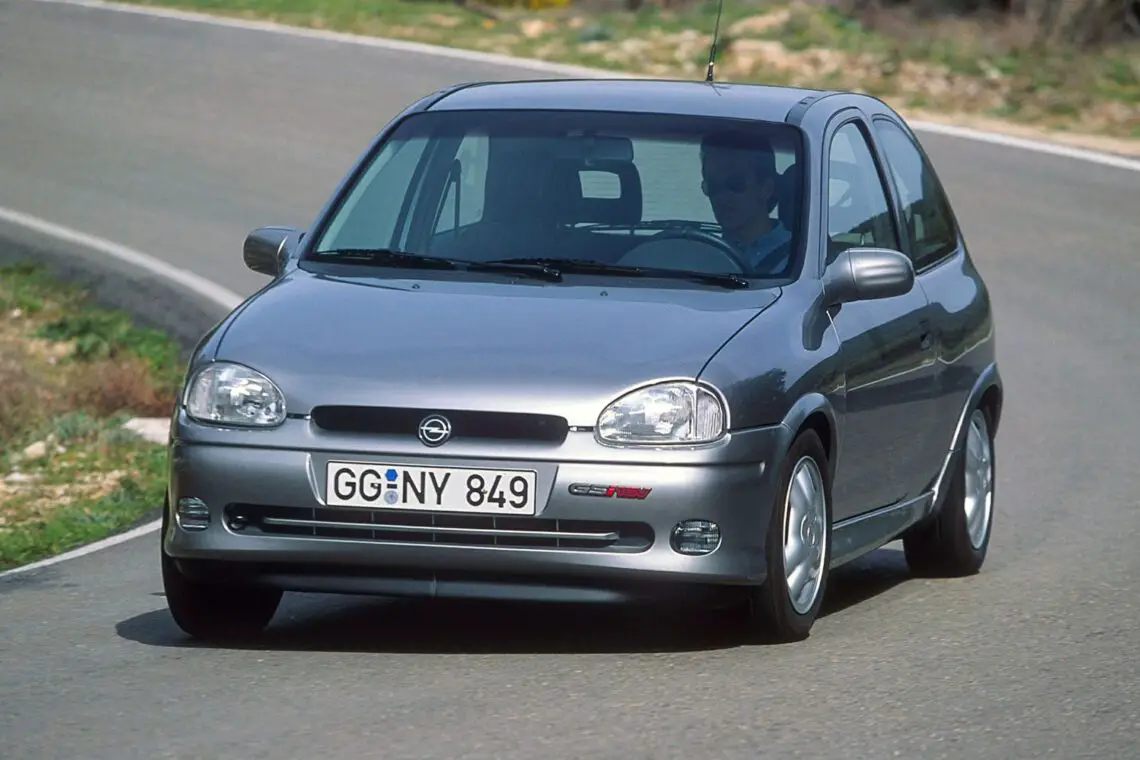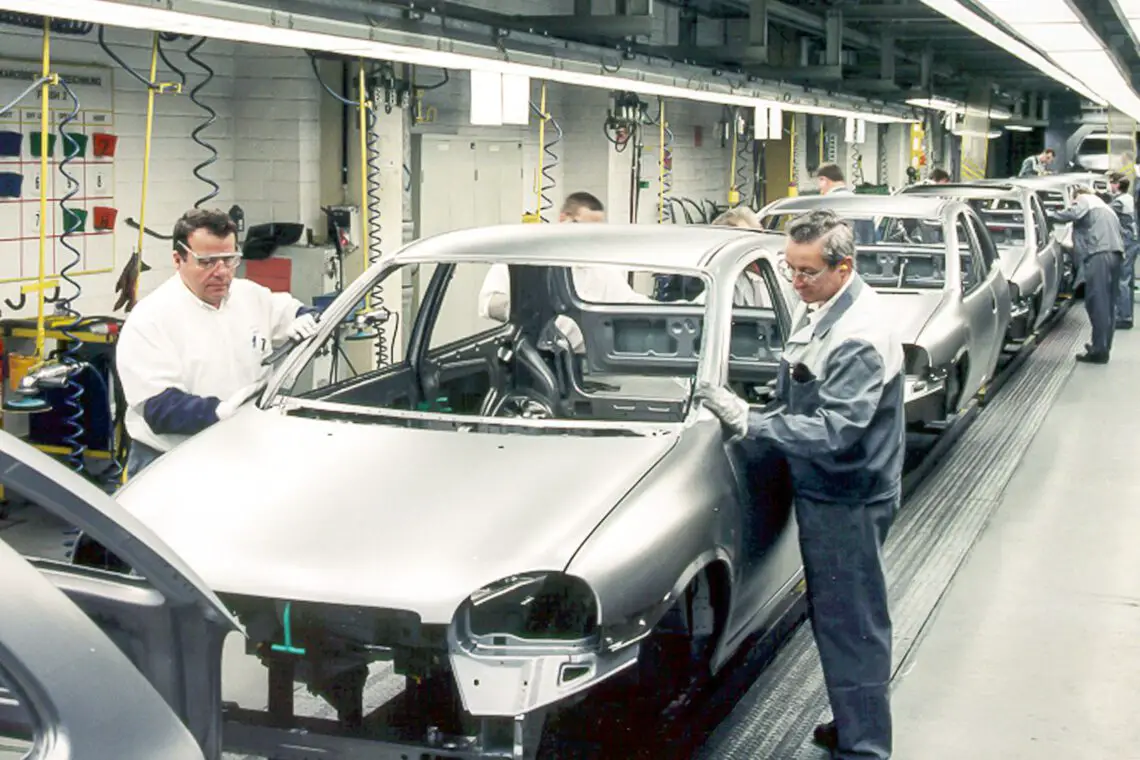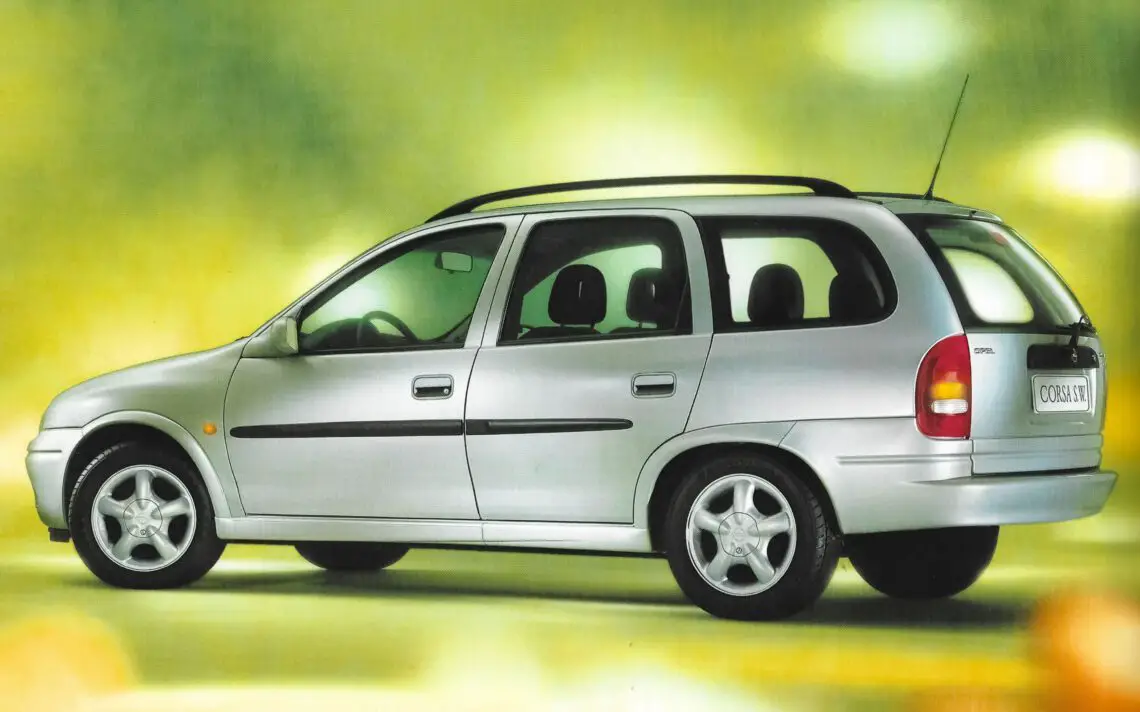Why the Corsa B was so special
Success Story
Since its introduction in 1982, Opel has produced more than 14.5 million units of the Corsa. The second generation of the Corsa left a deep impression at the time. After the success of the Corsa A, which Opel introduced in 1982, the Corsa B set a new standard when it appeared on the market exactly thirty years ago. With quirky design and advanced safety features, combined with a high level of comfort and practical benefits, it achieved worldwide success, even reaching the milestone of four million units sold in 2000. Moreover, starting in 1993, the Corsa B marked a new era as the first Corsa to be “made in Eisenach.

Bold step
Led by Hideo Kodama, the designers at the time took a bold step with the successor to the first Corsa. Following the immense success of the angular Corsa A, it was decided in Rüsselsheim to make the Corsa more attractive to women. Kodama went to work creating a much rounder and softer Corsa, whose headlights resembled big eyes. The smooth and rounded shapes were inspired by the striking concept car Junior, which attracted much attention a few years earlier. Besides the aesthetic aspect, the soft contours also had a practical advantage: they improved aerodynamics and thus reduced fuel consumption.

Also noteworthy was the different design of the three- and five-door models. The designers had practically created two models with their own character. The three-door model was given a sporty silhouette with coupe-like styling, while the five-door version was the “family version” with a more upright tailgate. This gave rear passengers more space and increased luggage volume to a maximum of 1,150 liters.
The Corsa B particularly stood out for its wide range of variants. With five trim levels ranging from Eco through Swing, Joy and Sport to the GSi, there was something for everyone. In addition, customers could choose from many color options and finish levels. Also, in addition to the three- and five-door hatchbacks, Opel also launched a station wagon, a four-door sedan and, for certain regions, even a pickup.

Safe
The second generation of the Corsa also set new safety standards in the compact car segment. The torsional stiffness of the body increased by 40 percent compared to its predecessor. For the first time in this class, Opel applied double steel beams in the doors, which provided passengers with additional protection in the event of a side collision. Opel also provided the Corsa with standard mechanical belt tensioners on the front seats. Height-adjustable front and rear seat belts, along with so-called “anti-submarining” seats – which reduce the risk of a passenger slipping off their seat during a collision under the belt – were other key safety features present in all Corsa variants. Moreover, a fullsize airbag for the driver was also available shortly after launch.

Corsa GSi
In 1993, Opel introduced the sporty Corsa GSi 16V. This sporty model featured colored sills, bumpers and spoilers on both the front and rear. Electronically controlled ABS, a tachometer and wide tires were among the standard equipment.
The Corsa GSi accelerated from 0 to 100 km/h in just 9.5 seconds and reached a top speed of 195 km/h. A sport-tuned suspension with gas-filled shock absorbers provided excellent handling. Sports seats and a leather-wrapped steering wheel created the right atmosphere in the cockpit.

